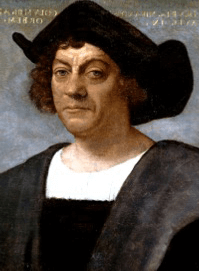October 18 is World Menopause Day
For women dealing with menopause, every day is World Menopause Day. The International Menopause Society (IMS), creator of the holiday, attempts to make it fun by choosing a new theme each year. It’s a little like the prom: full of sweaty, uncomfortable seniors driven crazy by hormones.
“What Comes to Mind: Menopause and the Aging Brain?” is a theme used recently. Is that a trick question to give English majors around the globe a collective hot flash/hissy fit? Does it mean that if it doesn’t come to mind, it’s already too late? Does it mean menopause and aging have nothing to do with each other? IMS has this to say:
During the menopause transition, there may…be modest reductions in aspects of attention, but natural menopause does not appear to lead to persistently poorer memory.
Okay, we’re done here, right?
There’s no definitive list of actions to take to help reduce memory loss but evidence does support some approaches over others. Brain health can be improved through mentally stimulating activities, such as work or leisure.
So, anything we do when we’re awake–got it.
Top 10 prevention tips
Oh no, here we go.
1.Nutrition: an antioxidant-rich Mediterranean diet with olive oil may help
2.Vitamin D and B-Vitamins: may improve brain health alongside other activities
3.Other dietary supplements: Soy isoflavones helping to improve memory
4.Physical activity: brisk walking and other forms of aerobic exercise are linked to a lower dementia risk 5.Mindfulness: Tai chi studies show positive outcomes for improving memory
6.Control alcohol consumption: moderating alcohol intake can help maintain brain health
7.Smoking cessation: reducing the intake of toxins can help boost brain health
8.Mental activity: important for boosting brain stimulation
9.Social interaction: engaging, challenging and creative communication
10.MHT: helping to alleviate distressful vasomotor menopausal symptoms
First, let us point out that #3 and #10 involve raising estrogenic activity, which can be a big no-no for anyone at risk of breast cancer. As the site states, its tips do not replace advice from your doctor.
We have a suggestion: why not integrate this holiday with two others taking place today? First, grab a razor, guys, for National No Beard Day, and shave off that chin Brillo. Skin gets delicate after menopause. No one needs the constant exfoliation your whiskers provide. Second, and most important, it’s National Chocolate Cupcake Day. Stress and hormonal changes can cause intense cravings for sugary treats. Buy a baker’s dozen for your menopausal loved ones. Don’t expect to get a cupcake for yourself unless you hide one in your car.
Have a happy World Menopause Day!
![]()


 Today is International Top Spinning Day, created in 2003 by the Spinning Top & Yo-Yo Museum of Burlington, WI, to celebrate one of the oldest toys in the world. It always takes place on the second Wednesday of October.
Today is International Top Spinning Day, created in 2003 by the Spinning Top & Yo-Yo Museum of Burlington, WI, to celebrate one of the oldest toys in the world. It always takes place on the second Wednesday of October. Although that’s a laudable goal, most of us have outgrown the sanitized version of events we learned in school. Can we celebrate the beauty of an idea while acknowledging the ugliness beneath the surface? It’s a complex subject, worthy of impassioned debate. For our purposes, however, let’s lighten the mood and debunk a few myths about Christopher Columbus.
Although that’s a laudable goal, most of us have outgrown the sanitized version of events we learned in school. Can we celebrate the beauty of an idea while acknowledging the ugliness beneath the surface? It’s a complex subject, worthy of impassioned debate. For our purposes, however, let’s lighten the mood and debunk a few myths about Christopher Columbus.